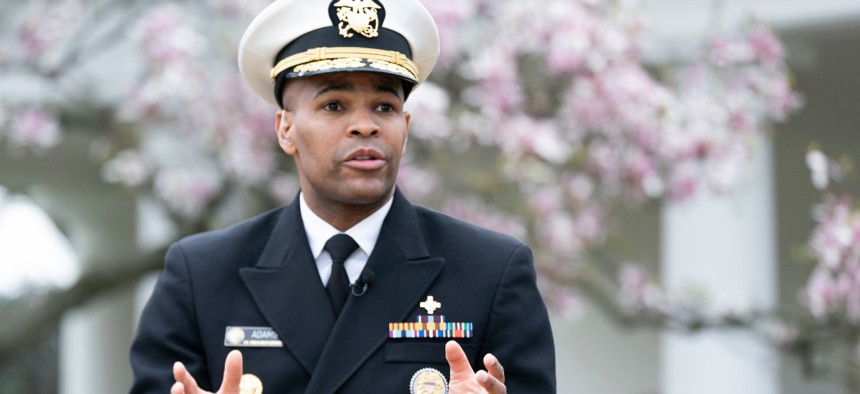America’s Other Heroes: The U.S. Public Health Service
On a recent visit to San Antonio, I encountered a new example of selfless service.
They flew in on short notice. They left their homes all across America; rushed to Lackland Air Force Base, in Texas, and other military installations; and got to work. They are not elite commandos or rapid-response troops, or at least not the kind you might imagine serving in our military. They are the civilian medical personnel of the National Disaster Medical System and the officers of the U.S. Public Health Service—doctors, nurses, medical technicians. And they always respond, parachuting into hot spots of disease and suffering in the wake of every kind of human trauma imaginable.
I’ve had the privilege of leading the Air Force for nearly four years, but until a recent trip to San Antonio to visit airmen, I knew little about the work of these skilled professionals. I do now, and I wanted to share their story, as one of many examples of Americans working cooperatively in a crisis, banding together in the kind of selfless service that we in the armed forces regard as a core principle. They provide lessons of leadership and sacrifice for all.
In Texas, I met public servants like 67-year-old David Diamond, a New York real-estate developer and EMT who, like his comrades, dropped everything and raced to help combat the coronavirus. Diamond, also a volunteer fireman on Long Island, found his calling for national-disaster work at the World Trade Center right after 9/11. Since then, he has gone to the scene of dozens of health crises.
In many ways, the caregivers in the National Disaster Medical System remind me of the part-time military reservists and guardsmen who are essential to our national defense. In their everyday jobs, these other “reservists” come from many walks of life: businesspeople, trauma-center directors, EMTs, veterinarians, respiratory therapists, and pharmacists. When called upon, they bring an unrivaled depth of experience and skill. Some 1,300 of them are now deployed around the United States, rotating in increments of two weeks or more. While many of us are rightfully shielding ourselves from the pandemic, these professionals are running toward it.
These responders are joined by others, including talented professionals from the Centers for Disease Control and Prevention and the Department of Health and Human Services, as well as officials from all the military services and state and local responders.
Think about what they faced entering the handful of military bases housing Americans evacuated from government offices in China and cruise ships sailing around the globe. Many of those who found themselves evacuated were senior citizens, perhaps disoriented and uncertain about many things we take for granted. One evacuee at Lackland was 98 years old; some were themselves retired doctors and nurses. Quite a few were veterans.
What I saw in San Antonio was so moving that I felt obligated to share the story. Some of these disaster shock troops have done this drill over and over in the most challenging circumstances you can imagine, fighting the Zika virus and deploying to every hurricane-recovery zone in America. They were even deployed to Flint, Michigan, to assist and provide care during the water crisis in that city.
One mission commander, Commander Mark Byrd of the uniformed U.S. Public Health Service, made a point of speaking, at length, with all 200 evacuees living in dorms at Lackland. He held daily briefings for his staff and for the people they were treating. One story particularly touched him: An 80-year-old retired military pilot, who had been on a cruise ship, arose every day at sunrise to stand at attention and salute when he heard reveille.
The coronavirus pandemic presents a new and unique challenge. The health-care workers I met are part of a network of Americans spread across the public and private sectors who are keeping us well and sustained, including National Guardsmen, nurses, grocery-store clerks, and delivery people. We have in our midst the next generation of servants in the image of Clara Barton and Florence Nightingale. And I hope all Americans will join me in keeping them in their thoughts in the days ahead.
Gen. David Goldfein is the Chief of Staff of the Air Force.
NEXT STORY: GovExec Daily: The Hazard Pay Lawsuit



